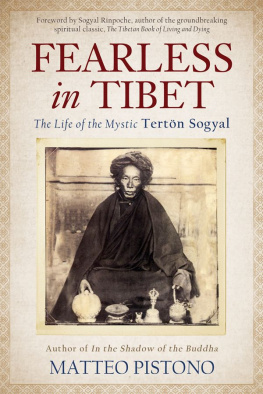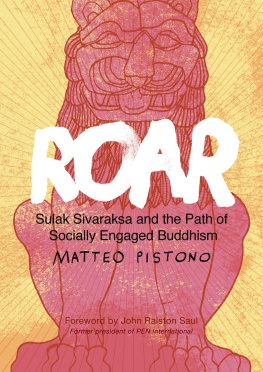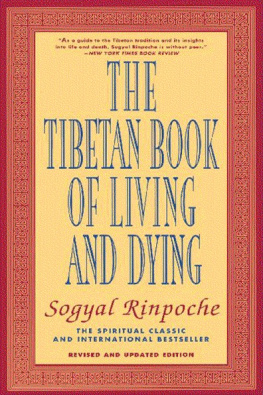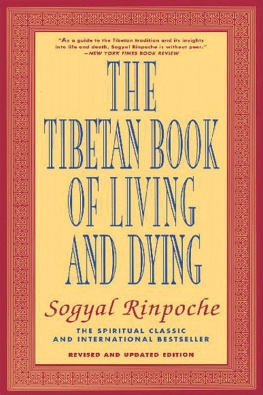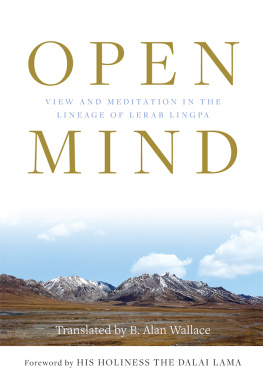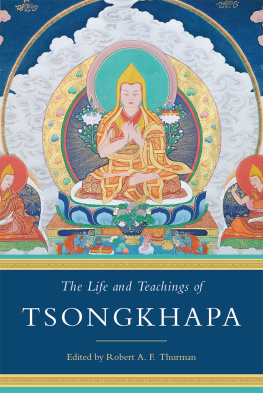Praise forFearless in Tibet
The life of Tertn Sogyal offers an epic tale of great spiritual practice. Fascinating to read, the story shares many key teachings as well. Fearless in Tibet is a gem for anyone interested in Tibetan Buddhist practice and culture.
Sharon Salzberg, New York Times best-selling author of Lovingkindness
Fifteen years in the making, Matteo Pistono has written a lyrical biography of Tertn Sogyal (18561926), the most powerful tantric master of his era. Pistonos gracefully written stories are evocative and magically playful, but his rendition of Tertn Sogyals journey is also critical to understanding the fate of Tibet. As a dakini named Tsephei warned the master in 1915, If China and Tibet fight in the future, everyone will lose, but in the end Tibet will succumb. This is now the living tragedy of our Tibet.
Kai Bird, Pulitzer Prizewinning biographer and historian
Tertn Sogyal exemplified the mastery of Buddha Dharma and the yogic conduct of a mahasiddha. Biographies of the great, authentic masters of Buddha Dharma are an integral part of the study and practice of Buddhism. They serve as true inspiration for practitioners and motivate all to strive continuously on the path of practice. This wonderful biography will be of great benefit and inspiration not only for practitioners of Tibetan Buddhism but also for anyone with sincere interest in discovering the depth of Buddhist insight.
Mindrolling Jetsun Khandro Rinpoche
Fearless in Tibet is filled with stories and poetry centering around the most profound topics in our human civilization. And whats moreits a remarkably good read. A unique spiritual biography and a must for all followers of Padmasambhavas teachings.
Erik Pema Kunsang, author of Wellsprings of the Great Perfection
Praise for Matteo Pistonos
In the Shadow of the Buddha
This story of Matteo Pistonos quest to visit places in Tibet associated with Tertn Sogyal, the adept who was a companion of the Thirteenth Dalai Lama, is revealing not only of the Tertn Sogals life but also of circumstances in contemporary Tibet.
His Holiness the Dalai Lama
ALSO BY MATTEO PISTONO
In the Shadow of the Buddha:
One Mans Journey of Discovery in Tibet
Copyright 2014 by Matteo Pistono
Published and distributed in the United States by: Hay House, Inc.: www.hayhouse.com Published and distributed in Australia by: Hay House Australia Pty. Ltd.: www.hayhouse.com.au Published and distributed in the United Kingdom by: Hay House UK, Ltd.: www.hayhouse.co.uk Published and distributed in the Republic of South Africa by: Hay House SA (Pty), Ltd.: www.hayhouse.co.za Distributed in Canada by: Raincoast Books: www.raincoast.com Published in India by: Hay House Publishers India: www.hayhouse.co.in
Indexer: Jay Kreider
Cover design: Amy Rose Grigoriou Interior design: Riann Bender
Map: Drawn by Jocelyn Slack
Mirror section break image: Line drawing from The Encyclopedia of Tibetan Symbols and Motifs, courtesy of Robert Beer (www.tibetanart.com)
Title page image: Retraced from the original at Kalzang Temple and digitized by Jamyang Dorjee Chakrishar (www.tibetancalligraphy.com)
All rights reserved. No part of this book may be reproduced by any mechanical, photographic, or electronic process, or in the form of a phonographic recording; nor may it be stored in a retrieval system, transmitted, or otherwise be copied for public or private useother than for fair use as brief quotations embodied in articles and reviewswithout prior written permission of the publisher.
The author of this book does not dispense medical advice or prescribe the use of any technique as a form of treatment for physical, emotional, or medical problems without the advice of a physician, either directly or indirectly. The intent of the author is only to offer information of a general nature to help you in your quest for emotional and spiritual well-being. In the event you use any of the information in this book for yourself, the author and the publisher assume no responsibility for your actions.
Cataloging-in-Publication Data is on file at the Library of Congress
ISBN: 978-1-4019-4146-8
17 16 15 14 4 3 2 1
1st edition, May 2014
Printed in the United States of America
CONTENTS
It was just over 50 years ago that the world suddenly became aware of Tibet and its culture, when His Holiness the Dalai Lama and a hundred thousand Tibetan people fled into exile, escaping the destruction in our homeland. Since that time, people in the wider world have discovered our extraordinary living tradition of Tibetan Buddhism, which has prevailed for more than a thousand years in Tibet and the Himalayan regions and has often been called one of the last ancient wisdom cultures on earth. With its remarkable knowledge of the mind and its profound disciplines of study and practice, the Buddhist tradition of Tibet produced countless outstanding masters and spiritually realized practitioners. One of these was Tertn Sogyal, or Lerab Lingpa, an exceptional figure who lived more than a century ago during the lifetime of the Thirteenth Dalai Lama.
As I write these words, I can see the sun gleaming on the copper roof of the temple here at Lerab Ling, the retreat center in France that I founded in the name of Tertn Sogyal. Thinking about him now, I realize that he was someone whose life embraced many different facets and dimensions. To begin with, you could say that he was a spiritual leader, deeply concerned with the future well-being of the world and its inhabitants, as well as with the spiritual progress of humanity. From the perspective of the ancient Nyingma tradition of Tibetan Buddhism, he stood out as a great master, mystic, visionary, and prophet, and a tertn, or treasure revealer, with more than 20 large volumes of revelations to his name. From the viewpoint of the historian, he was a teacher, friend, and ally of the Thirteenth Dalai Lama (18761933) and a defender of the realm, who, through his revelations, prophecies, and spiritual presence, played a crucial part in striving to ensure the survival of Tibet as a sanctuary for the study and practice of Vajrayana Buddhism.
To understand what drove and inspired Tertn Sogyal, we ought to step back for a moment into the eighth century, a time when the Buddhist teachings were established in Tibet by the extraordinary master Guru Padmasambhava, affectionately called Guru Rinpoche, meaning Precious Master, by the Tibetan people. Along with the great Indian abbot Shantarakshita and the King of Tibet Trisong Detsen, he presided over the construction of the first temple at Samye, the ordination of the first seven Tibetan monks, and the translation of the Buddhist teachings into Tibetan. To his closest 25 disciples, who included his consort, Yeshe Tsogyal, and King Trisong Detsen, he transmitted the innermost secret mantra teachings of Vajrayana, and then, blessing the whole land of Tibet and the Himalayas, he concealed countless spiritual treasures, or terma, destined to be discovered by successive incarnations of his chief disciples at precisely the most potent time in the future for them to be of maximum benefit. These treasures can take the form of statues, sacred objects and texts, or teachings revealed from within the minds of the treasure revealers. Once deciphered, they bring to light entire cycles of spiritual practice and teaching. One of these close disciples of Guru Rinpoche was Nanam Dorje Dudjom, a trusted minister of the king and an accomplished practitioner, who had been one of the original delegation sent to invite Padmasambhava to Tibet. Tertn Sogyal, or to give him his name as a tertn, Lerab Lingpa, was the incarnation of Nanam Dorje Dudjom.
Next page
